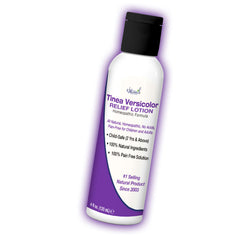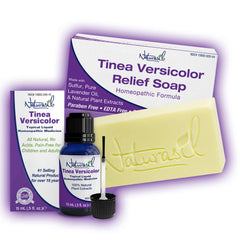Working on a nice summer glow can be frustrating when dealing with Tinea Versicolor. Those white spots that appear out of nowhere on your skin during the warm spring and summer months typically result from this very common (non-contagious) skin infection.
How Do You Get Tinea Versicolor?
Tinea Versicolor is caused by an overgrowth of yeast called Malassezia furfur and is commonly found on the skin's surface. It is not contagious and cannot be spread by physical touch. Research has shown that there may be a genetic predisposition for being affected by Tinea Versicolor, and it is most common in teens and young adults.
Do I Have Tinea Versicolor?
Tinea versicolor shows up on the skin in varying colors, such as white, pink, tan, or brown spots on the body in various locations. Typically, a dermatologist will diagnose tinea versicolor. It can appear on the backs of the thighs, torso, arms, and face. It can appear as dry patches or scaly on the surface of those spots if the yeast is particularly active in that area.
How Can I Get Rid Of - Treat Tinea Versicolor?
There are a few options for treating Tinea Versicolor. A dermatologist can prescribe an oral medication to kill off the overgrowing yeast on the skin causing the symptoms, as well as ketoconazole topical skin creams and body shampoos.
However, most of the prescribed treatments for Tinea Versicolor can cause unwanted side effects such as dry skin and sensitivity to sunlight. Using a natural Tinea Versicolor treatment can help treat the overgrowth of the yeast. Still, following the treatment, the guide encourages you to get out into the sun to help remedy the pigmentation issue!
Fact: Did you know that one of the main things this pesky yeast thrives on is your sweat? This is usually why Tinea Versicolor seems to get worse during warmer months.
Treating Tinea Versicolor is important. If left untreated, the infection can spread quickly to other areas. Don't delay treatment until it's too late to enjoy the warm weather!









